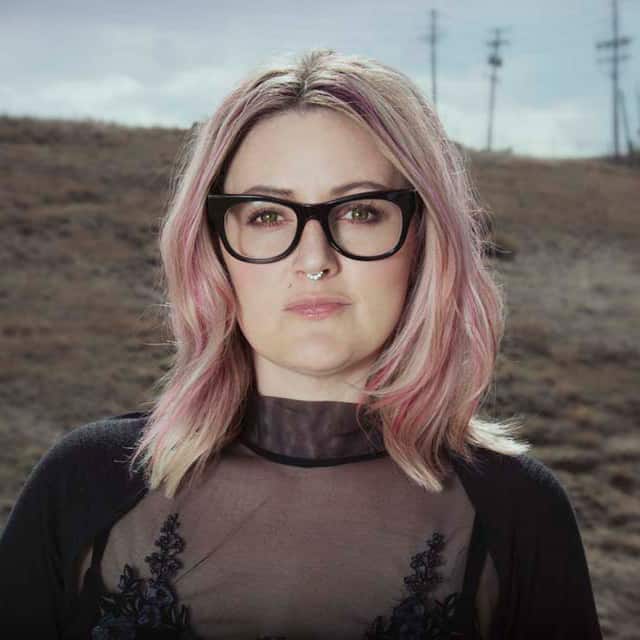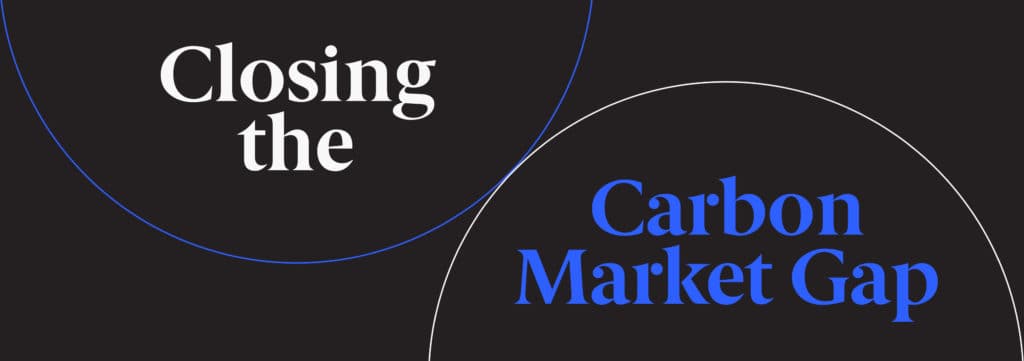Valerie Hawks | Modern Planeteer

With 15 years of print production and sustainability experience, Valerie helps clients minimize their carbon footprint.
Welcome to the first edition of Modern Planeteers, a series that features leaders in the sustainability space taking charge and making a difference with their work. This series aims to shine a light on some of the heroes who are working to carve out a path to a more sustainable economy and the planet as a whole. We are lucky to begin the series with a Q&A with Valerie Hawks, Head of Production and Sustainability at Interact Brands, who is especially passionate about participating in the circular packaging economy to maximize the sustainability of her clients’ packaging.
Meet Valerie Hawks, a Modern Planeteer!

Valerie Hawks is the Head of Production and Sustainability at Interact Brands, a strategic design studio shepherding tomorrow’s brands. Valerie’s 15 years of print production experience, knowledge, and enthusiasm guides clients from bright-eyed startups to courageous industry vets. She’s passionate about areas of the circular packaging economy that allow brands to maximize the sustainability of their packaging while minimizing their carbon footprint.
ABOUT THE MODERN PLANTEERS SERIES
The 90s cartoon Captain Planet is an unexpected part of CarbonBetter’s origin story. Our founder, Tri Vo, was inspired as a child by the “Planeteers,” who fought eco-villains that were trying to destroy the planet. He learned that everyone can make a difference and every step in the right direction matters. Today, the business that Tri built helps companies in all industries decarbonize, and we’re not alone in doing our part to fight climate change. In this series, we feature modern day Planeteers—heroes who are working to save our planet. You can be one too!
Explore the SeriesValerie, putting sustainability first can have an impact on prices. How do you address this issue in the messaging for your clients?
Many brands are not only worried about the additional cost incurred with more sustainable practices, but they are also concerned about missteps in publicly committing to sustainability goals. We work with brands who are doing some really cool stuff around sustainability but are afraid to talk about it due to the fear of misrepresenting their progress in the ever-changing landscape of sustainability. No one wants to be accused of making false claims, or even worse, the dreaded label of “greenwashing.”
Before we jump to adding on cost for new materials and substrates, the best way to get a client on board with loftier and costlier goals is to talk about what they’re already doing right, and then help THEM to talk about it as well. Starting the sustainability journey where they’re at as opposed to where they want to be—which does usually cost more money—is one of the best ways to get buy-in down the line when they’re confident in the direction they’re headed. It is then that they become more willing to make funds available for sustainability advancements.
Where do you think the most progress has been made in the sustainability movement in the past year?
I’m noticing more and more people caring about sustainability. Not just brands. Not just consumers or reports about consumers. Not just other folks in the industry. But coworkers and colleagues, friends and neighbors—it seems like there is a wider breadth of people with a growing understanding of our need to embrace sustainability. And in my industry (the CPG and packaging design industry): sustainable packaging. More folks are talking about it on LinkedIn, more packaging salespeople are focusing on sustainable options and selling that to their clients, and there are podcasts, blog posts, and even TikTok content focused on sustainable packaging. This building momentum and hype is exactly what we need.
“I’m noticing more and more people caring about sustainability. Not just brands. Not just consumers or reports about consumers. Not just other folks in the industry. But coworkers and colleagues, friends and neighbors.”
Valerie’s THOUGHTS ON THE GROWING SUSTAINABILITY MOVEMENT

Closing the Carbon Market Gap
According to Bank of America, carbon offset supply may need to grow as much as 50x by 2050 to achieve net-zero emissions. Watch the replay as three experts discuss efforts to close this gap and the challenges in developing projects and issuing credits at scale.
What are bad recommendations you hear being passed around when companies talk about becoming more sustainable? What would you steer companies away from doing that might not be as helpful as they think?
COMPOSTABLE PACKAGING, COMPOSTABLE PACKAGING, COMPOSTABLE PACKAGING.
One more time for the folks in the back: COMPOSTABLE PACKAGING. Many brands still naively view compostable packaging as a panacea for sustainability. It. Is. Not.
Here are some stats to bring home this point: Most commercial composting facilities in the US (United States) are not equipped to handle compostable packaging. Only about 15% of facilities accept any form of compostable packaging. There are currently 185 municipal compost facilities in the US. That means that less than 28 of them accept any form of packaging.
Unless you are specifically marketing to consumers in an area with 1 of these 27-ish facilities, as a brand, you are ensuring your packaging goes to a landfill or causes problems for a compost facility. Could something that was widely recyclable be used instead? Or something made of recycled materials?
Sending compostable packaging to a facility that is not equipped to handle it will contaminate the compost (i.e. the compostable packaging is now doing more harm than good). Compostable packaging tends to muck up the sorting process and be mixed in with food scraps. Because of this, many facilities will choose not to accept any food scraps and only accept green compost (grass clippings and yard trimmings). We need food waste to be composted! So we definitely don't want to limit that.
Without clear labeling, it can be nearly impossible for a facility to distinguish between compostable bio-plastic and conventional plastic. Without regulation requiring accurate labeling, the lack of standardization makes it too difficult and costly for facilities to attempt.
Consumers are the ones who need correct labeling to put the packaging in the correct bin to begin with. Consumers are also the ones requesting compostable packaging, for the same reasons brands do—they believe it is better. But without the infrastructure in place to handle it, we are negatively impacting the other benefits of commercial composting, like tackling food waste.
What can be done to improve compostable packaging and help to solidify the infrastructure needed to make a difference? Brands that use compostable packaging should seek out certifications, namely from BPI (Biodegradable Products Institute). The folks at How2Recycle have also created a How2Compost label that tells consumers exactly what to do with the packaging at the end of life of the product. Brands can use their platforms to better educate consumers on privately run compost facilities in their area that they might not otherwise have been aware of, or on local drop-off sites for their packaging.
Being honest about the fact that their compostable packaging needs to be composted and will not just do better in a landfill than non-degradable counterparts can go a long way to creating more accurate views among consumers on compostable packaging. And lastly, if you have a use for compost in your yard or garden, seek out compost made from municipal compost facilities. The more we drive up demand for the end product, the more money can be made available for improvement to the infrastructure. This can lead to more facilities that will be able to accept compostable packaging.
Have you read or listened to anything lately that you feel is important content for our readers to check out?
I just had 15+ hours of flying in a day, and I watched several fascinating sustainability documentaries!
- The Last Tourist: About sustainable (or unsustainable) tourism. The irony is not lost on me that I was watching this while coming back from vacation where I was, in fact, a tourist.
- Patagonia's Artifishal: About wild salmon vs hatchery salmon and the damage that hatcheries have done to wild populations.
- Patagonia's Public Trust: About the fight for public lands.
If you were to give a Planeteer Alert, what hot-button topic would you highlight for people to learn about?
I love this Planeteer Alert on recycling. But we're going to need to elaborate on it a bit more for 2022. Yes, we should all be recycling, and it starts with all of us. But, some of us in the US do not have municipal recycling facilities available to utilize. How does one go about recycling their bottles and cans if there is no place to take them?
The Sustainable Packaging Coalition's How2Recycle program did a study on the availability of municipal recycling to US residents. You can read more about it here. But the cliff notes are: only about 40% of the American population has a curbside recycling bin.
If your town does not have municipal recycling, you can look for private recycling facilities and contractors and inquire about how you can participate. You can check out Earth 911 and search for options near you. You can also call and write to your city officials. Encourage your neighbors to do the same. There is strength in numbers! The EPA even has a toolkit on how to get these sorts of initiatives off the ground.

About Interact Brands
Interact Brands is a branding and design firm ushering in the changing of the guards in CPG. We work with magnetic founders and strategic brand managers alike, even building our own studio brands to truly practice what we preach. Clients include challenger brands like KOIA, Vive Organic & Hodo, industry leaders like Dr. Squatch, Dogfish Head, and Country Archer, along with brand stewardship work for a number of Fortune 500 food companies.